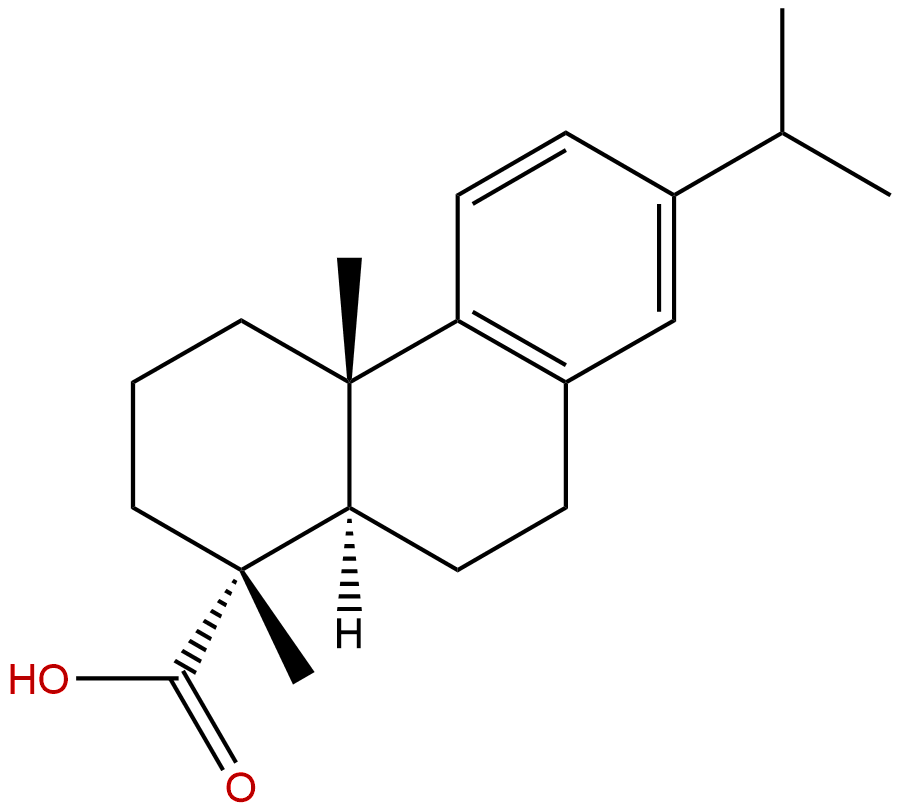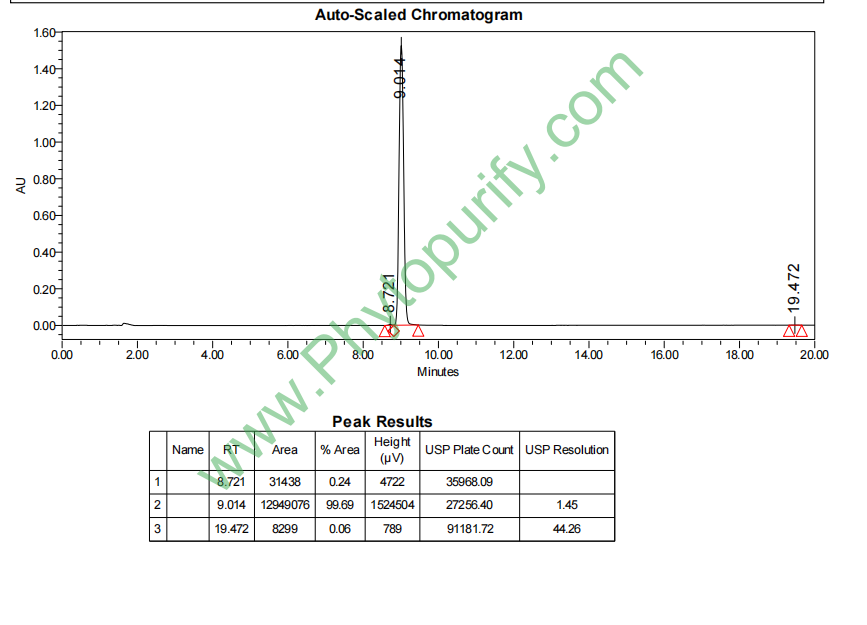
Dehydroabietic acidCAS No.:1740-19-8
|
||||||||||
 |
|
|
||||||||

| Catalogue No.: | BP3111 |
| Formula: | C20H28O2 |
| Mol Weight: | 300.442 |
Product name: Dehydroabietic acid
Synonym name:
Catalogue No.: BP3111
Cas No.: 1740-19-8
Formula: C20H28O2
Mol Weight: 300.442
Botanical Source:
Physical Description: Powder
Type of Compound: Diterpenoids
Purity: 95%~99%
Analysis Method: HPLC-DAD or/and HPLC-ELSD
Identification Method: Mass, NMR
Packing: Brown vial or HDPE plastic bottle
Storage: Store in a well closed container, protected from air and light. Put into refrigerate or freeze for long term storage.
Whenever possible, you should prepare and use solutions on the same day. However, if you need to make up stock solutions in advance, we recommend that you store the solution as aliquots in tightly sealed vials at -20℃. Generally, these will be useable for up to two weeks.
The product could be supplied from milligrams to grams, up to kilograms
Inquire for bulk scale.
Descriptions:
Dehydroabietic acid (DHAA), a major poison to fishes in pulp and paper mill effluents, has toxicological and physiological effects, 20 μg l?1 is close to the “minimum effective concentration” of DHAA to rainbow trout.[1]
Dehydroabietic acid derivatives have been reported to display antisecretory and antipepsin effect in animal models, have gastroprotective activity in the HCl/EtOH-induced gastric lesions in mice as well as for cytotoxicity in human lung fibroblasts (MRC-5) and human epithelial gastric (AGS) cells. [2]
Dehydroabietic acid derivatives have antiulcer activity.[3]
References:
[1] Oikari A, L?nn B E, Castrén M, et al. Water Res, 1983, 17(1):81-9.
[2] Sepúlveda B, Astudillo L, Rodríguez J A, et al. Pharmacol Res, 2005, 52(5):429-37.
[3] Wada H, Kodato S, Kawamori M, et al. Chem Pharm Bull, 1985, 33(4):1472-87.
[4] K. Hroboňová, Dr. J. Lehotay, I. Ska?áni, et al. J Liq Chromatogr R T, 2005, 28(11):1725-35.
HPLC of Dehydroabietic acid
